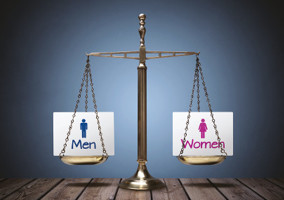“General” charities have a lower gender pay gap than organisations like independent schools, government-controlled bodies or housing associations, research for NCVO suggests.
Freelance data scientist David Kane produced a dataset analysing the gender pay gap within the sector using information submitted to the government's Gender Pay Gap service. The findings have been summarised by Lisa Hornung, senior data and research analyst at NCVO, on the umbrella body's blog today.
The gender pay gap is the difference between the average hourly earnings of men and women.
Kane found a 2 per cent gender pay gap in “general charities”. This is lower than previous estimates in April, which put the figure at 7 per cent. These charities also have a much higher proportion of women in the top pay quartile.
The term “general charities” is used by NCVO to exclude organisations like independent schools, government-controlled bodies or housing associations.
This average is markedly lower than non-general charities, which have an average gender pay gap of 16 per cent. This is because charities with larger pay gaps are mostly schools, colleges and universities.
The majority of charities, 64 per cent, pay men more. But, over half of charities have a gender pay gap below 3.5 per cent, which means that they are either paying women more, have equal pay or pay men up to 3.5 per cent more than women.
The top 50 charities have significant disparities in their pay. An analysis of government gender pay gap data shows the mean gender pay gap for the 50 largest charities, as ranked in the haysmacintyre / Charity Finance 100 Index, was 11 per cent.
In 2018, employers in the UK with more than 250 employees were mandated to report data on the gender pay gap in their organisations. There were 10,450 organisations that submitted data for 2018/19 and 571 were identified as charities.
The average gender pay gap across all UK organisations that filed their data for 2018/19 was 8.6 per cent.
Charities, and others, may publish “a supporting narrative” outlining the reasons why a gender pay gap is present and what the organisation intends to do to close it.
'We must not be complacent'
There were 22 charities, 4 per cent, that had fewer than 250 employees and voluntarily published gender pay gap data. This is the same proportion as in the public and the private sector.
Karl Wilding, director of public policy at NCVO, said: “These findings tell a positive story for household-name charities. But we still have a way to go, we must never be complacent. Looking at gender equality is just a start. We must also start thinking about ways we can use data to identify and challenge unequal pay for other groups that are underrepresented and experience discrimination.
“Publishing your gender pay gap, regardless of whether or not you are required to do so by law, is just one example of how transparency and accountability can and should prompt action, and NCVO encourages all charities publish theirs.”
|
Related articles












